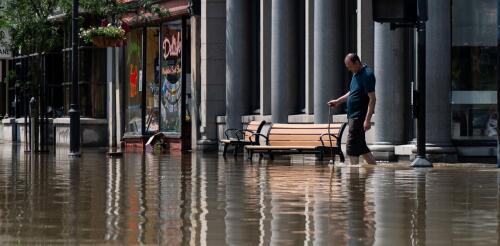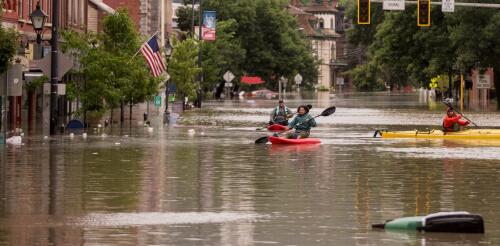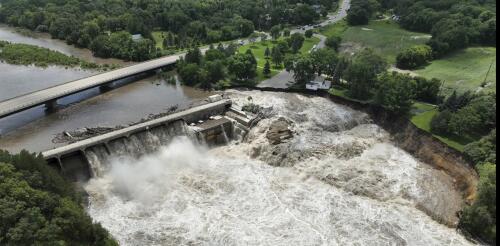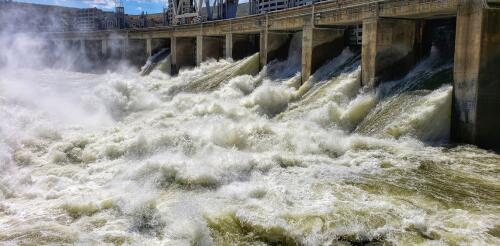Vermont
National weather analysts released their 2023 billion-dollar disasters list on Jan. 9, just as 2024 was getting off to a ferocious start. A blizzard was sweeping across across the Plains and Midwest, and the South and East faced flood risks from extreme downpours. The U.S. set an unwelcome record for weather and climate disasters in 2023, with 28 disasters that exceeded more than US$1 billion in damage each. While it wasn’t the most expensive year overall – the costliest years included multiple hurricane strikes – it had the highest number of billion-dollar storms, floods, droughts and fires of any year since counting began in 1980, with six more than any other year, accounting for inflation. 2023’s billion-dollar disasters. Click the image to expand. NOAA The year’s most expensive disaster started with an unprecedented heat wave that sat over Texas for weeks over...
The year 2023 was marked by extraordinary heat, wildfires and weather disasters. In the U.S., an unprecedented heat wave gripped much of Texas and the Southwest with highs well over 100 degrees Fahrenheit (37.8 Celsius) for the entire month of July. Historic rainfall in April flooded Fort Lauderdale, Florida, with 25 inches of rain in 24 hours. A wave of severe storms in July sent water pouring into cities across Vermont and New York. Another powerful system in December swept up the Atlantic coast with hurricane-like storm surge and heavy rainfall. The West Coast started and ended the year with flooding and mudslides from atmospheric rivers, and California was hit in August by a tropical storm – an extremely rare event there. Wildfires ravaged Hawaii, Louisiana and several other states. And Canada’s worst fire season on record sent thick smoke across large parts of North America. A person walks through a scene of destructio...
Leer en español. Southeast Michigan seemed like the perfect “climate haven.” “My family has owned my home since the ‘60s. … Even when my dad was a kid and lived there, no floods, no floods, no floods, no floods. Until [2021],” one southeast Michigan resident told us. That June, a storm dumped more than 6 inches of rain on the region, overloading stormwater systems and flooding homes. That sense of living through unexpected and unprecedented disasters resonates with more Americans each year, we have found in our research into the past, present and future of risk and resilience. An analysis of federal disaster declarations for weather-related events puts more data behind the fears – the average number of disaster declarations has skyrocketed since 2000 to nearly twice that of the preceding 20-year period. A powerful storm system in 2023 flooded communities across Vermont and left large par...
Heavy rainfall generated widespread flooding. in the Upper Midwest in late June 2024, putting at least one aging dam at risk. In southern Minnesota, the Blue Earth River cut a path around the Rapidan Dam in Rapidan Township, about 15 miles south of Mankato, on June 24, putting the structure at imminent risk of failing. Officials warned local residents that if the dam burst, the river could rise by 2 feet, but said that evacuations were not needed. This event comes a year after flooding in Vermont collapsed at least one dam and threatened others. Hiba Baroud, associate professor and associate chair in the department of civil and environmental engineering at Vanderbilt University, explains how flooding stresses dams in a changing climate. How serious is the risk when water flows over or around a dam? These conditions can result in erosion, which subsequently could lead to a dam breach or failure and a sudden, uncontrolled release of impounded water. The risk reflects the combin...
As rising global temperatures make extreme storms more common, the nation’s dams and reservoirs – crucial to keeping communities dry – are being tested. Storms in the U.S. Northeast stretched the region’s flood control systems nearly to the breaking point in July 2023. California and states along the Mississippi River faced similar flood control challenges in 2023. Managing these flood control systems is a careful balancing act. Do managers release water to make room for the storm’s runoff, increasing the risk of flooding downstream, or hold as much as possible to protect downstream farms and communities, which could increase the chance of larger floods if another storm comes through? The earlier decisions can be made, the better the chance of avoiding downstream damage. But forecasts aren’t always reliable, and waiting for the rain to fall may mean acting too late. Satellite water vapor imagery from July 9-11, 20...




